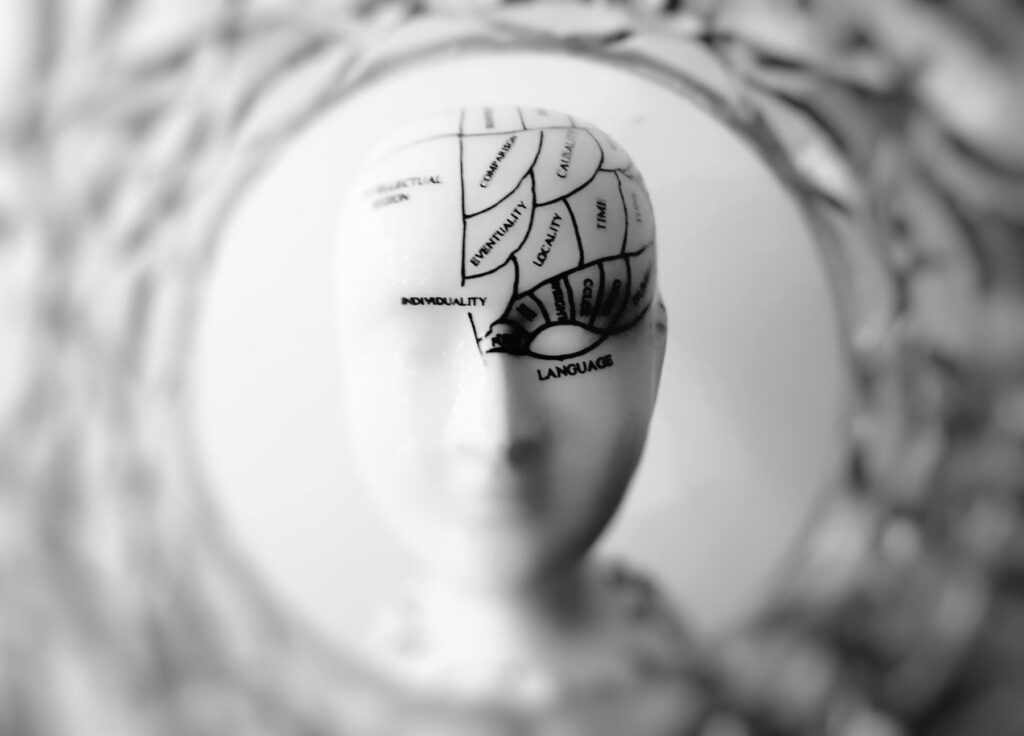Improving critical thinking skills for student teachers’ transition into schools

A project to develop and encourage CTS skills at university, for application in the classroom
Not everything you read is true. Advertisements often make extravagant claims, the internet abounds with ‘fake news’ and it’s often necessary to read between the lines to get at the ‘truth’. Indeed, to make decisions, to understand the world around us or to solve global issues, the evidence must be critically appraised. However, it is not unusual to hear academics despairing about students’ ability to ‘think’ (Birkenhead, 2009; Arum and Roksa, 2010).
In this article, I describe an intervention, carried out during Initial Teacher Education (ITE), to improve student teachers’ Critical Thinking Skills (CTS) in their university studies, following external advice that this aspect should be strengthened (Estyn, 2017).
Developing critical thinking – the challenges
There are many challenges when trying to develop student teachers’ CTS at university. As Wallace and Wray (2006, p. 9) point out, ‘it can be a shock to the student when first discovering that facts can be interpreted in diverse ways, leading to very different predictions or judgements about what should happen’.
There are myriad ways that teaching and learning occurs in the classroom. As such, student teachers need to plan and adapt accordingly, which requires expertise and CTS to reach judgements about the best way to support pupils’ progress and achievement.
During ITE, student teachers are expected to critically analyse and interpret a range of information (e.g. from research studies, assessment data, knowledge of context, pupil performance etc) to form opinions about what should take place in the classroom. Moreover, by considering the impact of their choice of pedagogy and decisions on pupils’ outcomes, student teachers can start to accurately monitor their efficacy as teachers. However, students need to be trained to apply their CTS in the school classroom in the first place (Halpern, 1999).
Challenges of putting CTS into action
Training and ability are not enough to guarantee that students will demonstrate criticality. Halpern (1999, p. 72) explains that some students may be disinclined to use CTS, even when they possess these skills, because of the ‘mental effort’ they evoke. Student teachers may, therefore, not only require support to develop these skills but encouragement to use them. As Halpern notes (1999, p. 72), it is not enough to teach these skills, it is essential that tutors address ‘student dispositions’, motivating them to apply the skills.
Moreover, Halpern (1999) argues that students can find it difficult to transferThe processes of applying learning to new situations these skills from one context to another. This challenge is especially pertinent to teacher education as it often involves two contexts (i.e. university and school). Therefore, student teachers may require support to transfer their CTS from their university studies to the school classroom.
In summary, developing student teachers’ CTS is not straightforward. It is clearly not enough to occasionally mention these skills in the hope they will be picked up. These skills are difficult to learn. Student teachers are, therefore, likely to require much instruction, practice and analysis of their own development at university to support the transfer of these skills to novel situations in the classroom.
Four-part model for critical thinking
When I was asked to lead the project to improve student teachers’ CTS I decided to use Halpern’s four-part model for developing critical thinking (1999, p. 73) as a basis for my intervention (see table 1 for details). I chose this model as Halpern claims (1999) that it can improve students’ CTS.
It also fitted with my chosen research methodology (action research) and proposal to ‘plan, do and review’ (Denscombe, 2014). Action research is undertaken by practitioners as part of their professional practice (Thomas, 2009; Cohen et al., 2010; Denscombe, 2014).
I hoped to improve my own ability to develop these skills, as well as develop my own professional practice (e.g. my ability to lead improvement initiatives) by taking part in this study.
Susan Wyn Jones
Stage 1
Plan: Instruction in the skills – advice, guidance and instruction on how to develop and demonstrate the skills.
Action taken: Planned stand-alone sessions at the start of the year were used to outline commonalities and links between CTS and lesson evaluation for all stakeholders (student teachers in their final year of study, school mentors and university tutors).Guidance booklets (CTS and lesson evaluation) and exemplar material were written and shared. (Examples of what does not constitute CTS and evaluation of learning were included.) On the basis of interim findings, further workshops were also offered on CTS during the year.
Stage 2
Plan: Disposition – encouragement to exert the mental effort to needed to apply the skills.
Action taken: Tutors were directed to highlight these skills with their students. Tutors and mentors were reminded to encourage their students’ demonstration of these skills at key points during the year. Performance management involved a focus on tutors’ ability to develop their students’ skills during sessions.
Provision was audited and examples of work produced during the interim stage.
Students and tutors were also given specific targets in this area. All students were encouraged to aim for at least a 2:1. Tutors were simultaneously given the target of getting at least 60% of the students to gain a 2:1 or 1st (or merit at Master’s level) in their assignments (a doubling of the previous year’s results).
Students were also expected to aim for Green in the RAG-rating of their lesson plan and evaluation portfolio (against shared success criteria). They took part in peer-assessment activities.
Students who excelled were encouraged to share their practice with others during workshop sessions to motivate others to reach the same standard.
Senior Mentors were invited to talk to the university students about the importance of CTS for the Newly Qualified Teacher year.
Stage 3
Plan: Structured training to support transfer of skills.
Action taken: A series of structured activities were designed to develop CTS and evaluative skills. These were shared with all tutors and applied in sessions to help students demonstrate CTS in their academic studies and when out on school placement. Interim results guided bespoke workshops offered during the year to attend to areas of weaknesses identified as a result of continuous assessment processes.
Stage 4
Plan: Discussion and monitoring of the students’ thinking process and progress.
Action taken: Tutors were encouraged to use Socratic questions and co-operative learning methods to monitor metacognition and CTS development during sessions. Tutorials and self- and peer-assessment were also used to discuss and monitor students’ thinking process and progress.
Students were asked to give themselves targets related to CTS and to outline how they would achieve the target(s).
Review
The outcomes (i.e. based on the students’ written assignments, lesson evaluations) were assessed at interim points during the year (via the faculty’s normal RAG-rating and scrutiny routines and written up in my self-evaluation report for scrutiny by the faculty’s boards). I then arrived at summative judgements, which were externally verified by Her Majesty’s Inspection team (Estyn).
A positive impact on standards and trainees’ evaluations are now more focussed on pupil progress as a measure of the effectiveness of their teaching. (Estyn, 2017)
External verification of judgements
Inspections of ITE programmes require ‘providers to accurately evaluate their own performance’ (Estyn, 2015, p8). The internal assessment of outcomes was found to be in accordance with the external judgement and progress was considered to be ‘strong’.
It was also reported (Estyn, 2017) that the faculty had successfully emphasised CTS and the approach taken involved all stakeholders. They considered that tutors, mentors and student teachers had been given clear direction. Highlighting the skills and an ‘increased awareness of the importance of these skills together with a structured programme have provided tutors with a sound structure for developing trainees’ skills’ (Estyn, 2017, p. 6). They verified that data collection (via the monitoring of assignments and RAG-rating of written evaluations) had allowed the faculty to identify areas of weakness and to target these in workshops during the year (Estyn, 2017). Furthermore, the activities carried out had ‘a positive impact on standards and that trainees’ evaluations are now more focussed on pupil progress as a measure of the effectiveness of their teaching’ (Estyn, 2017, p. 7).
Discussion
In-line with the background literature and this study, I found that student teachers do indeed require training and support to be critical and to transfer these skills into the classroom setting to evaluate learning. Both from my own experience of working with my small group of personal tutees and leading the work across the faculty, it is necessary to revisit and reinforce these skills at every opportunity during university studies. It was also necessary to reinforce initial training in evaluation of learning early on during their school placement.
Student feedback
As the year progressed and some students made very good progress they were able to lead and support their peers during university call-back days to ensure further learning and improvements. The involvement of school mentors in reinforcing expectations and later tying it to Newly Qualified Teacher expectations were also deemed to be useful (via routine questionnaires) to focus the students on developing their CTS.
Some student teachers may have been motivated to develop their CTS by being made more aware that improving their CTS in their university studies can support their ability to evaluate pupils’ learning in the classroom. Indeed, as outlined by Furlong (2015), the Organization for Economic Co-operation and Development (2012) regards teacher education to work best when there is a duality of learning between university studies and school placement. Developing CTS at university may be such an aspect as it bridges the artificial divide between the two settings in promoting the development of effective, scholarly practitioners.
The tutorial sessions and discussion of action plans to improve CTS were also deemed to focus the students’ minds on CTS. Co-operative learning methods used during sessions were also reported (via Performance Management routines) to be helpful to promote group discussion and analysis of thinking.
My own professional development
As to my own professional practice, the experience of leading on this project has allowed me to develop several useful managerial skills, including the ability to set specific targets and self-evaluate outcomes. It has also allowed me to work closely with programme leaders, to motivate university staff, school mentors and students teachers to make improvements. In doing this, I have been able to establish closer working across programmes and to encourage those who have excelled on this project to share their expertise more widely.
Going forward
A minority of student teachers were found to require further support to demonstrate good CTS and evaluative skills. Possibly they would have benefited from further support earlier on with these aspects to enable them to make more progress and/or more input during their school placement. Working on the development of CTS of this group is an area worthy of further study.
Implications of this study
The study had the following implications.
- All stakeholders should ensure they have a shared understanding of expectations with regards to CTS and evaluating learning. Specific targets and shared success criteria are helpful in making expectations clear.
- ITE programme leaders should audit provision (how the skills needed to be critical and evaluate learning are developed) and map out sessions to ensure enough attention is given to CTS development throughout ITE programmes, alongside all the other aspects of becoming a qualified teacher.
- Schools that mentor student teachers should be aware that as part of their CTS development there is an expectation that student teachers will explore and even challenge accepted pedagogy. This must be undertaken in an environment where it is acceptable to be critical of the accepted institutional ways of doing things. Being open to the idea that student teachers may challenge accepted ways of doing things may be a necessary pre-requisite of schools involved in leading mentoring student teachers.
This article has been accepted for publication by the Journal of Teacher Action Research.
This article was published in April 2018 and reflects the terminology and understanding of research and evidence in use at the time. Some terms and conclusions may no longer align with current standards. We encourage readers to approach the content with an understanding of this context.
References
- Arum, R and Roksa, J. 2010. Academically Adrift: Limited learning on college campuses. Chicago: Chicago University Press.
- Bikenhead, T. R. 2009. We’ve bred a generation unable to think [Accessed 23 February 2017].
- Cohen, L., Manion, L and Morrison. K. 2010. Research methods in education. 6th ed. Abingdon: Routledge.
- Denscombe, M., 2014. Good research guide: for small-scale social research projects. Buckingham.
- Estyn. 2017. Follow-up Report.
- Estyn. 2015. Guidance for the inspection of initial teacher training [Accessed 7 April 2017].
- Furlong, J. 2015. Teaching tomorrows teachers [Accessed 5th November 2016].
- Halpern, D. 1999. Teaching for critical thinking [Accessed 5 November 2016].
- OECD. 2012. Strong Performers and Successful Reformers in Education: Lessons from PISA for the United States [Accessed 5 November 2016].
- Thomas, G, 2009. How to do your research project. London: Sage.
- Wallace, M and Wray, A. 2009. Critical reading and writing for postgraduates. Sage: London.










